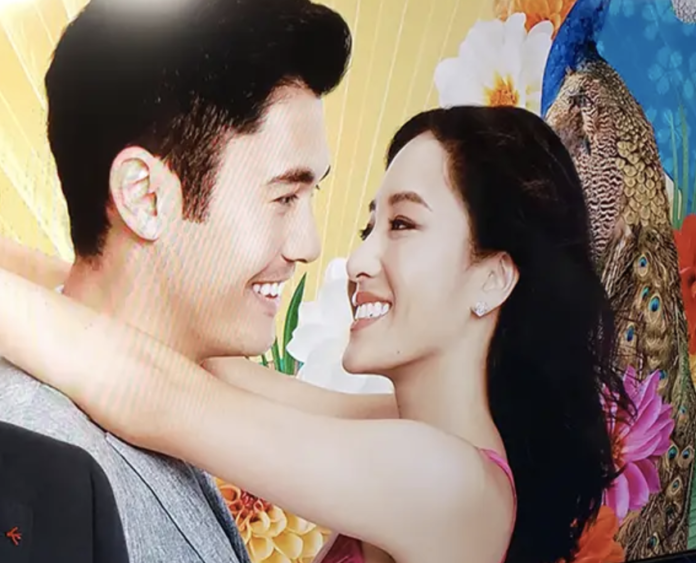Jessica Gang
Opinions Editor
It’s almost impossible to separate “Crazy Rich Asians” from the fanfare that precedes it. As the first Hollywood film to feature an all-Asian cast in a quarter century, the movie had high expectations in the cinematic community. But nowhere are expectations higher than in the Asian-American community, where Asian-Americans are typically cast as supporting characters — the token brainiac or the stone-faced martial artist.
There have been movies that break this mold, however, but in large part, this is the representation that we are used to seeing on screen. I’m happy to say that “Crazy Rich Asians” shatters this stereotype in every conceivable way.
The movie introduces us to our main character, Rachel Chu, (Constance Wu) an endearingly charming, down-to-earth economics professor at New York University. We meet Rachel as she prepares to travel to Singapore to meet her boyfriend Nick Young’s (Henry Golding), family for the first time. Unbeknownst to her, Nick’s father is the wealthiest real estate developer in Singapore, and his family is practically royalty.
While this might seem like a classic “meet-the-parents” type escapade in which Nick’s family disapproves of Rachel because she is not rich, the main reason they disapprove of her is because she is not Chinese enough. Rachel has never been to Asia, is the only child of a single mother, can not fluently speak or understand Chinese, and cares little about the social status of wealthy Chinese families.
Perhaps worst of all, Rachel has a conspicuously American attitude that seems worlds away from the traditional values espoused by large, established Asian families. When she first encounters Nick’s assertive mother Eleanor, (Michelle Yeoh) Rachel gives a moving speech about how her mother encouraged her to pursue her passions and how she hasn’t looked back since. This speech is met with an almost glacial stare by Eleanor, who studied law at Oxford before dropping out to marry Nick’s father in order to cultivate their family.
“Crazy Rich Asians” is packaged as a romantic comedy, and contains several nuanced love stories. However, at its core, this film is about an Asian-American struggling to gain the approval and trust of other Asians. Despite her heritage, Rachel is consistently referred to as “that American girl” or an “unrefined banana” (yellow on the outside, white on the inside) — terms that many Asian-Americans are intimately familiar with.
Once Rachel arrives in Singapore, she is forced to contend with naysayers that question her relationship with Nick, her family, wealth, American upbringing, and choice of career, all while trying to ingratiate herself into a culture that seems dead-set on rejecting her.
However, the climax of the movie comes when Rachel realizes that her worth doesn’t stem from how “Asian” she is, but instead from the strength of her intelligence, morals, and beliefs.
In this scene, she meets Eleanor for a game of mahjong, and Rachel (a professor of game theory), is finally able to hold her own. As the game concludes, Rachel walks across the room to take the hand of her own mother Kerry, who makes quick, meaningful eye contact with Eleanor across the crowded room.
Eleanor and Kerry have led completely different lives, but they have both made tremendous sacrifices for their families: Eleanor by abandoning her promising career to raise a family and Kerry by abandoning her family and culture for the promise of a better life for her daughter in America.
These two stories might seem like polar opposites, but they have become two quintessential aspects of the Asian experience. And watching that moment made many Asian-Americans (myself included) feel that perhaps the dueling American and Asian sides of us might be able to coexist more fluidly than we imagined.
My favorite scene in the film is relatively quick and is set at a crowded dining table where Rachel sits quietly, surrounded by Nick’s squabbling relatives as they make dumplings together. There are several different conversations happening, and it’s clear that she understands little of the rapid-fire Chinese that’s being thrown around the table. Still, she sits peacefully, obviously content to be around a loud family dinner table making food together. It’s apparent that being surrounded by a large, loving family is an experience that she’s never had.
But Rachel is independent, career-oriented, and unafraid to stand up to authority — qualities that she developed in America, away from the rigid traditionalism of many Asian families. Both these values and these experiences are part of the Asian-American story, and “Crazy Rich Asians” is the first film that speaks directly to the young generation of Asian-Americans who are beginning to flourish across the United States and the globe.
This is our time. And how lucky we are to have found a film that reminds us of the fact that although Asians and Asian-Americans come from radically different backgrounds, we share one culture and one heart.











